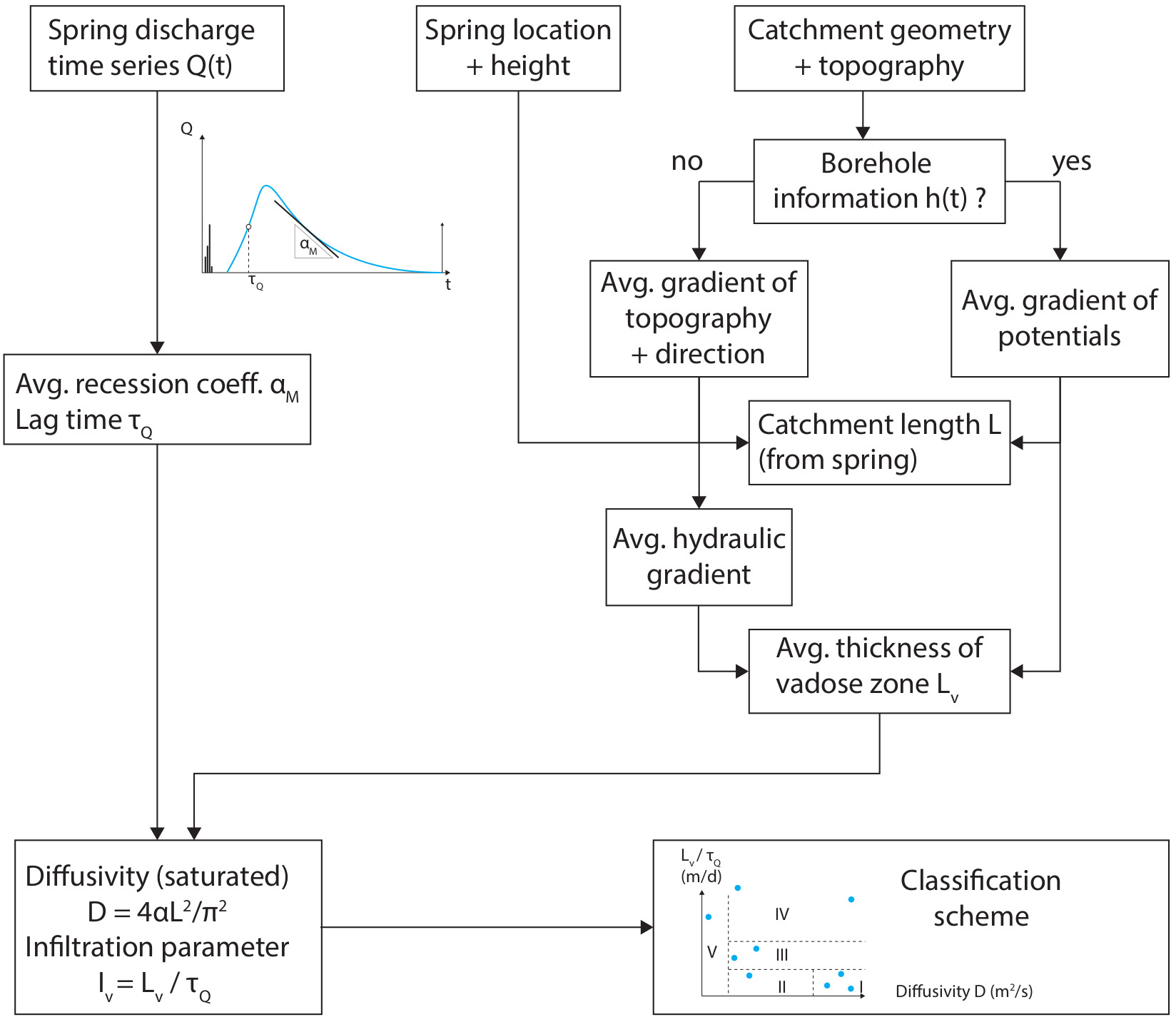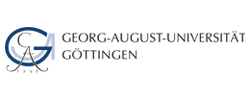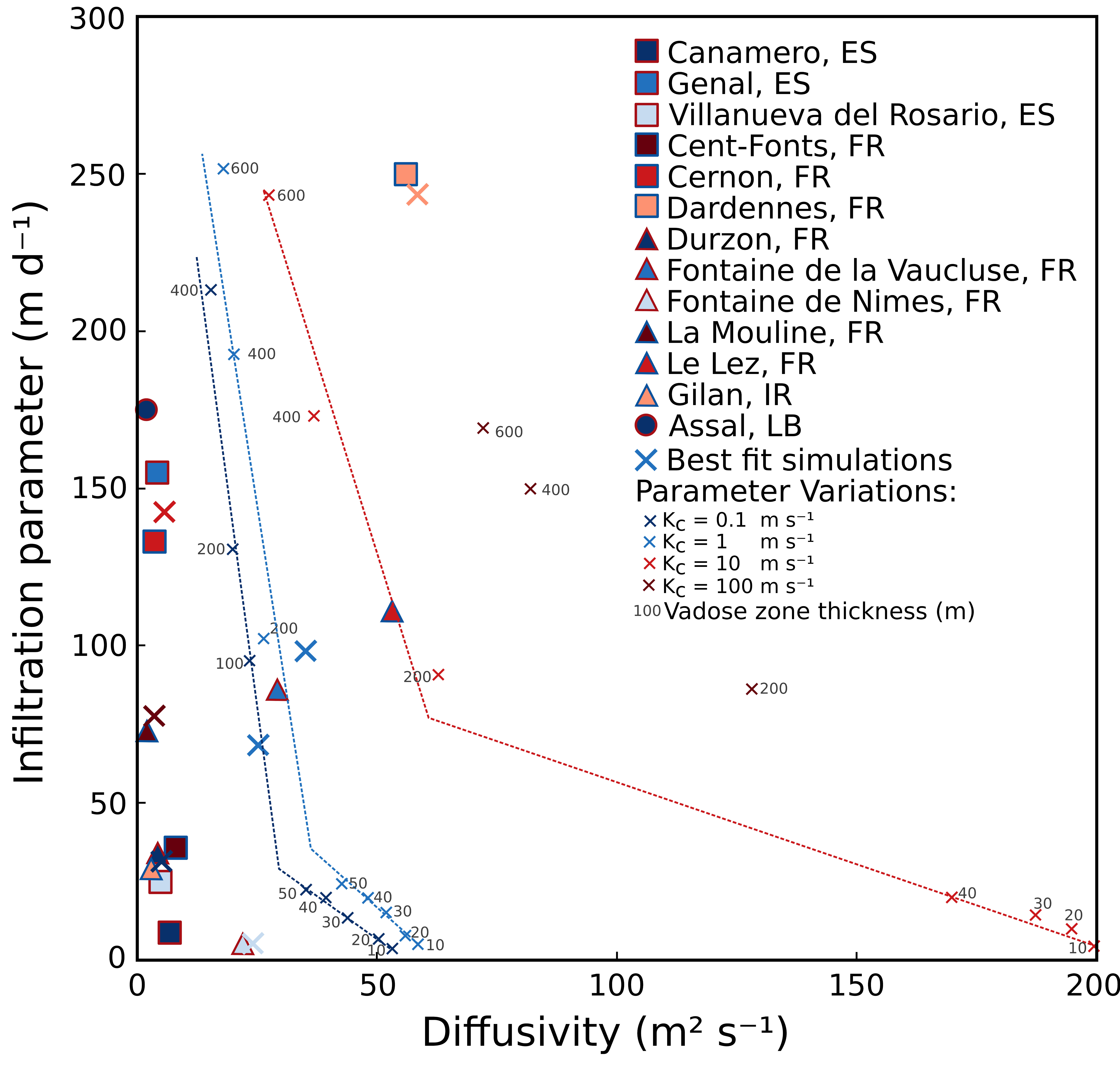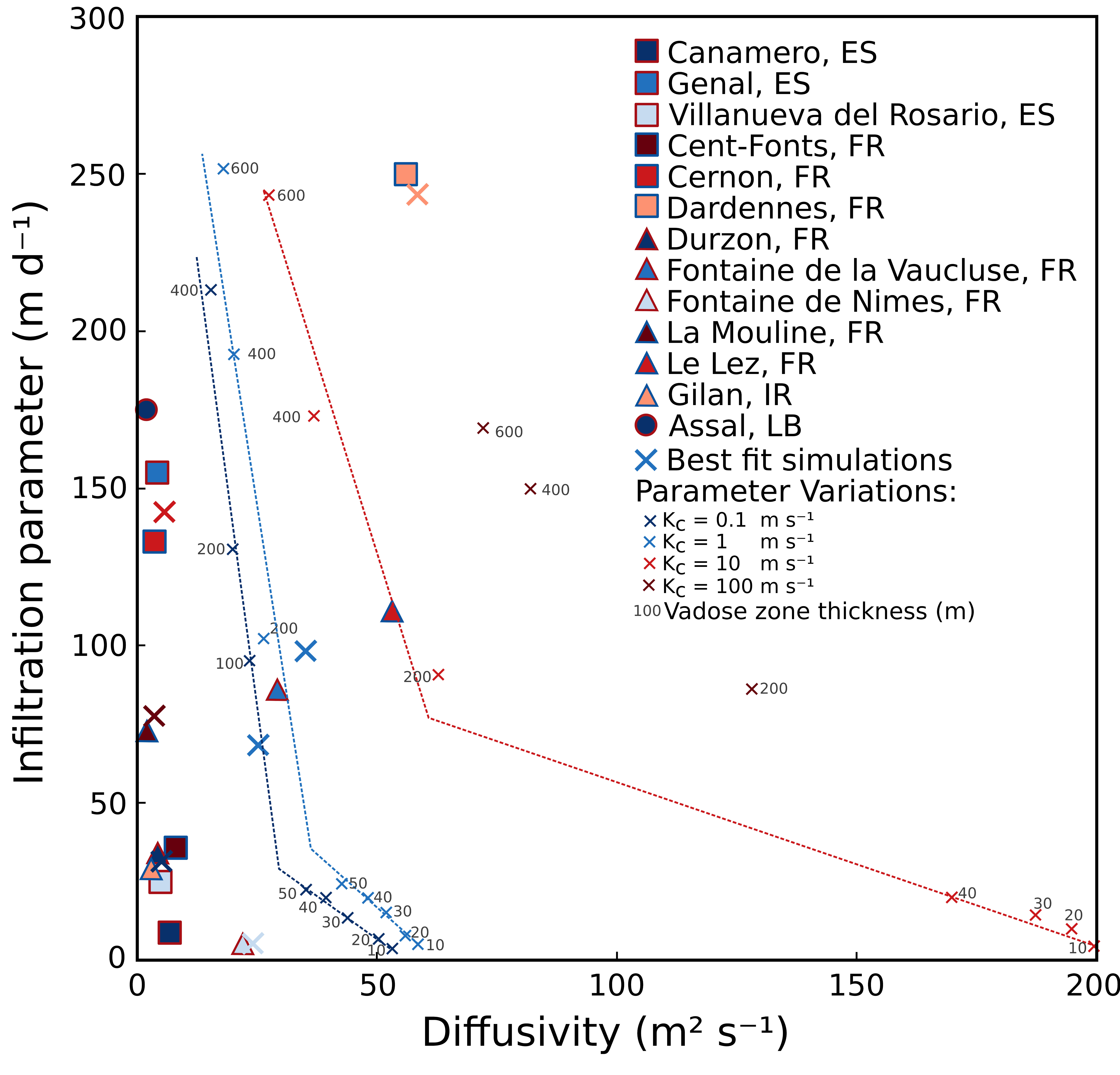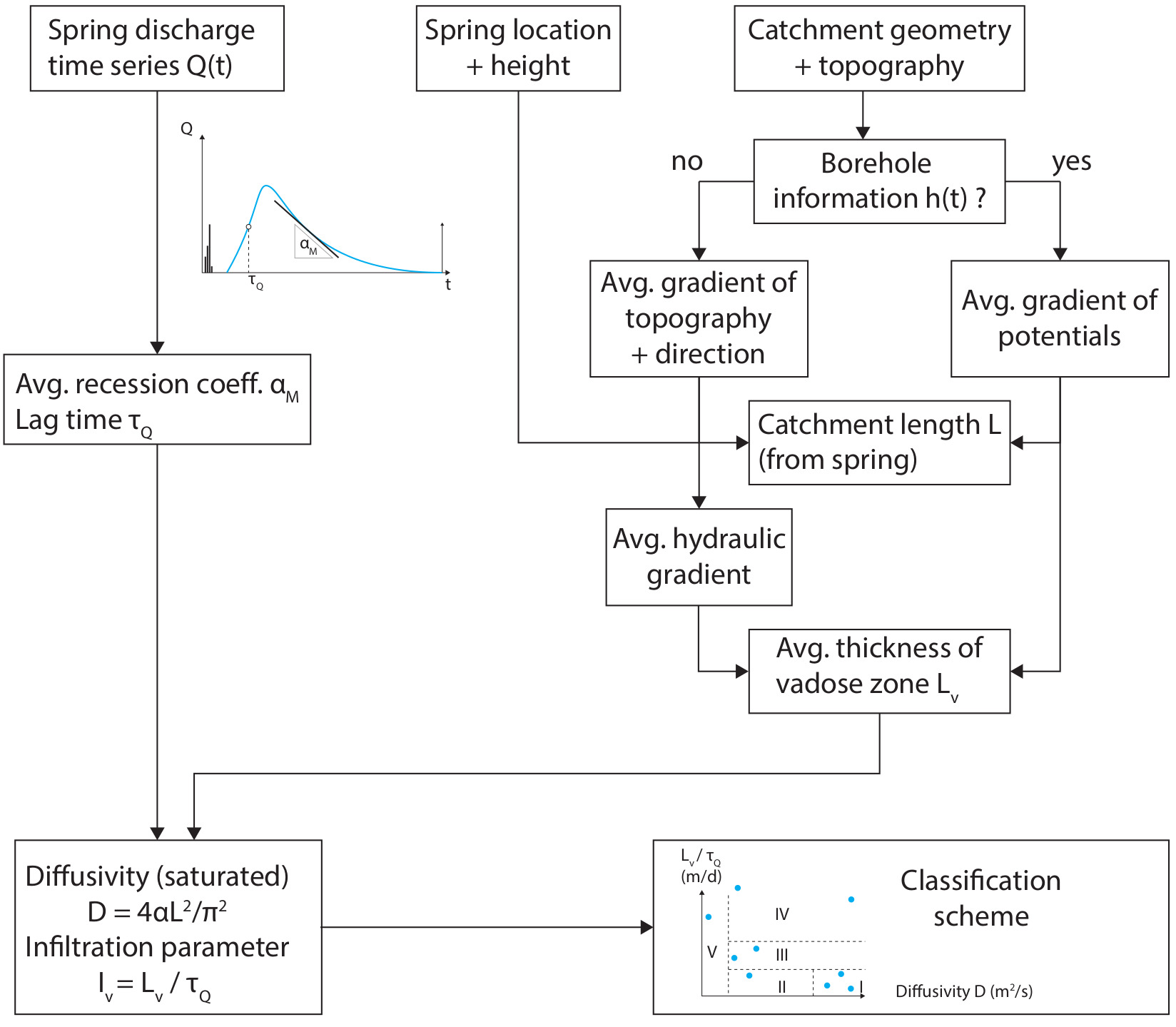Using less easily recorded hydraulic data, the classification scheme makes it possible to evaluate carbonate aquifers with regard to their vulnerability to periods of drought and their suitability for groundwater management.
The developed workflow is a useful tool for the management of carbonate aquifers in Mediterranean climates. The assessment of the carbonate aquifers does not require detailed knowledge of the nature of the subsoil. All that is required is a sufficient temporal resolution of the spring hydrograph and simple geometric properties of the catchement area. The recession data of the spring discharge contains key information about the hydrogeological properties (e.g. maturity of the karst, storage capacity) of the entire aquifer. By evaluating the recession data, the hydraulic diffusivity and an infiltration parameter can be assessed, which are determined by the thickness of the vadose zone and the karstification of the saturated and unsaturated zone.
Carbonate aquifers with a higher infiltration parameter and lower diffusivity are more resistant to periods of drought. However, high infiltration parameters can indicate a high risk of contamination. From the point of view of groundwater management, the most suitable carbonate aquifers are therefore characterised by medium to high values for the infiltration parameter and low values for the hydraulic diffusivity.

